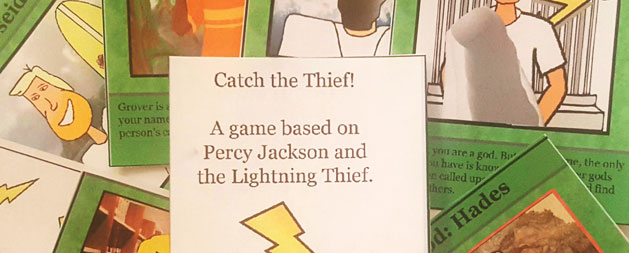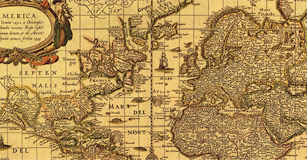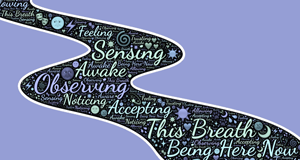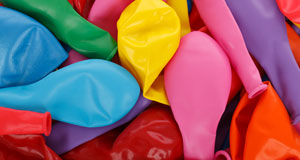Create a Card Game
Students explore ideas of character and plot to create their own card game based on the storyline of a book they are reading.
App: Wixie®

Task
Table top gaming has always been a staple of family fun night. Many popular games feature a fun storyline, such Dungeon and Dragons, Love Letters, and One Night Ultimate Werewolf. In this lesson, students will use the storyline of a book they reading to create a card game. They will work in small teams to design the game, write clear and concise directions, and design cards and game pieces.
Engage
Begin by talking to your students about the games they play, including tabletop board games, card games, and (of course) video games. What are some of their favorite games?
Ask them to think about what makes these games enjoyable. Have them confer with a classmate or two to promote discussion and ideas. Then, have each small group share what they have identified and work as a class to collect and refine the game list.
Share examples of board games and card games that use a storyline. What makes each game unique? For example, talk about the difference between a board game like Trivial Pursuit and Clue or a card game like Uno and One Night Ultimate Werewolf.
Spend part of a class period playing a game with a storyline. Some students will take much more time than others; you can start a conversation with the students that finish first about which games they are most familiar with and which games would be great for playing during class.
After they have played, revisit the list of features that make for a great game that you created as a class. Ask the students how having a game based on a storyline changes the game play and how a player relates to the game.
Now that students recognize that successful games connect players to the storyline, introduce the idea of card games related tobooks you are reading. A card game is a great way to connect readers to the characters and events in a book. Form students into small teams and let them know they will be creating a card game based on the storyline of a book they are reading.
Create
Unless students will all be using the same book, give teams time in class to discuss books they have read and enjoyed, and which have storylines that might make for a great game. You may want students to share their opinions with the entire class to help others make decisions. You could also have students form teams around their favorite books or stories.
Once students have decided on which book(s) to use, the team should revisit what they know about characters and events in their story. You might use graphic organizers like clusters to help students identify character traits for each character. This will be especially helpful if the game they are creating assigns points or powers for character traits.
Create a Graphic Organizer
Need a thought web, timeline, flowchart, or other graphic organizer for a lesson?
CreateThe sequence of events in a story can often be used to create steps in a game. You may want to help students visualize the story’s sequence with an organizer like Freytag’s Pyramid.
Wixie include both cluster diagrams and plot diagram activities you can assign to support the process for students.
Next, students should begin to brainstorm ideas for game play. Because the options are almost unlimited, you may want to encourage them to model their game after one they know. You should also encourage them to ask and answer questions like:
- What is the objective of the game?
- How long will it take to play?
- How many players can play?
- How does one win the game?
Teams will also need to decide what type of game they want to create and what materials will be needed.
- Does it need a game board?
- Can it be played with just cards and tokens?
- How does a player score?
- How do players keep score?
Once they have decided on the type of game, have them work to summarize the story and game play with a flowchart or storyboard. Teams should also begin crafting directions and rules of play.
As the game begins to take shape, it’s time to divide and conquer to create the components of the game. The team needs to decide who will design, edit, and produce components such as:
- Instructions and rules of play
Since instructions will need to be printed at game card size, this task needs a strong writer and editor who can share information in a clear and concise manner. Writing Frequenty Asked Questions (FAQs) can be a helpful way to get all of the information written before writing instructions that will fit onto a game card or two. - Create the cards, tokens, or other game pieces
This includes creating both the content and image on the playing side of each card, as well as the graphic design that will decorate the back side of every card. If students are designing in Wixie, remember to rotate the canvas before work begins to create cards in portrait orientation.
Some games will require tokens to help keep track of players’ locations and/or score. Encourage students to use similar designs for tokens and the back of the playing cards. - Marketing Materials
How will students inform others about the game? Students should produce media that can be shared online or via social media. For example, game FAQs would be great in a blog post about the game. The graphic design on the back of the cards might be a great image to share via social media.
Students may want to create an introductory story with audio narration players can use to get a summary of the story before they play.
As they begin to flesh out directions and game design, have students print what they have created as a prototype and play amongst their own team. They must decide what needs revision, make those edits, and play again.
When teams are confident about their game, they should produce a final set of game components to share with others outside the group.
Share
Once students are finished with their game, it time to play. Start by hosting a day where two teams partner up to teach, facilitate, and play each other’s games. Be sure to leave time at the end of class so teams can talk with each other about features they liked.
This is also a great opportunity to ask students to participate in the assessment process. After facilitating and playing each game, have teams reflect on the success of the game and evaluate it against the project rubric.
Take time at the beginning of the next period to discuss the game play. What did they learn from playing other student’s games or facilitating the play of their own game? Do they have new opinions about effective game design?
At this point, work can go a variety of directions. If students have made a real investment in their game, host a gaming party for other students to come join in the fun. You could host a day of play during lunch, after school, or even a tournament.
If teams had varying levels of success with each of the components of their game, likerules, style of play, directions, and card design, consider taking additional time to try to combine the most successful ideas into a new game. This might be a great step to further boost comprehension if everyone is creating a game based on the same book.
This would be a great opportunity to bring in the author of the book you are using. Many authors love talking to students, especially when the students have connected deeply to their book in ways that aren’t on an author’s FAQ page.
You can also host a family game night for your community. Since the games are based on books or student stories, work with the media specialist to host a game night in the library to highlight different games and books.
Assessment
Once you begin discussing games with your students, you will get a sense of student engagement in the topic, as well as evaluate their familiarity with games that have a storyline.
These initial discussions will also help you determine how much reflecting and thinking students have done about the structure and features of games they have played and enjoyed. If students haven't really thought about game design, take additional time to play games and evaluate them together.
You can use students’ graphic organizers, clusters, plot diagrams, and flowcharts as tangible formative assessments to make sure they are clear on comprehension of the story. Flowcharts and storyboards also provide great check-in opportunities to clarify misconceptions and evaluate progress before they are too far into the design and production process.
Having impromptu discussions with each group during the brainstorming, designing, and production process will give you insight into whether or not you need to provide additional information, revisit these topics with individual groups, or provide additional whole-class instruction and discussion.
Use the game directions, rules, and card content as tangible summative assessments. Provide high-quality examples of how-to writing. Include clear rubric criteria to guide their writing.
Resources
Schell, Jesse.The Art of Game Design: A Deck of Lenses, Second Edition Cards
Ultimate Werewolf Game Summary and Reviewhttps://www.theboardgamefamily.com/2014/05/one-night-ultimate-werewolf-game-review/
Creating a card game from start to finishhttps://praliedutzel.wordpress.com/2013/01/31/creating-a-card-game-from-start-to-finish/
Love Letters Rules - story and game playhttps://www.alderac.com/tempest/files/2012/09/Love_Letter_Rules_Final.pdf
Standards
Common Core Anchor Standards for for English Language Arts
CCSS.ELA-LITERACY.CCRA.R.1
Read closely to determine what the text says explicitly and to make logical inferences from it; cite specific textual evidence when writing or speaking to support conclusions drawn from the text.
CCSS.ELA-LITERACY.CCRA.R.2
Determine central ideas or themes of a text and analyze their development; summarize the key supporting details and ideas.
CCSS.ELA-LITERACY.CCRA.R.3
Analyze how and why individuals, events, or ideas develop and interact over the course of a text.
CCSS.ELA-LITERACY.CCRA.W.3
Write narratives to develop real or imagined experiences or events using effective technique, well-chosen details and well-structured event sequences.
CCSS.ELA-LITERACY.CCRA.W.4
Produce clear and coherent writing in which the development, organization, and style are appropriate to task, purpose, and audience.
CCSS.ELA-LITERACY.CCRA.W.7
Conduct short as well as more sustained research projects based on focused questions, demonstrating understanding of the subject under investigation.
ISTE NETS for Students 2016:
3. Knowledge Constructor
Students critically curate a variety of resources using digital tools to construct knowledge, produce creative artifacts and make meaningful learning experiences for themselves and others. Students:
a. plan and employ effective research strategies to locate information and other resources for their intellectual or creative pursuits.
b. evaluate the accuracy, perspective, credibility and relevance of information, media, data or other resources.
c. curate information from digital resources using a variety of tools and methods to create collections of artifacts that demonstrate meaningful connections or conclusions.
d. build knowledge by actively exploring real-world issues and problems, developing ideas and theories and pursuing answers and solutions.
6. Creative Communicator
Students communicate clearly and express themselves creatively for a variety of purposes using the platforms, tools, styles, formats and digital media appropriate to their goals. Students:
a. choose the appropriate platforms and tools for meeting the desired objectives of their creation or communication.
b. create original works or responsibly repurpose or remix digital resources into new creations.
c. communicate complex ideas clearly and effectively by creating or using a variety of digital objects such as visualizations, models or simulations.
d. publish or present content that customizes the message and medium for their intended audiences.









